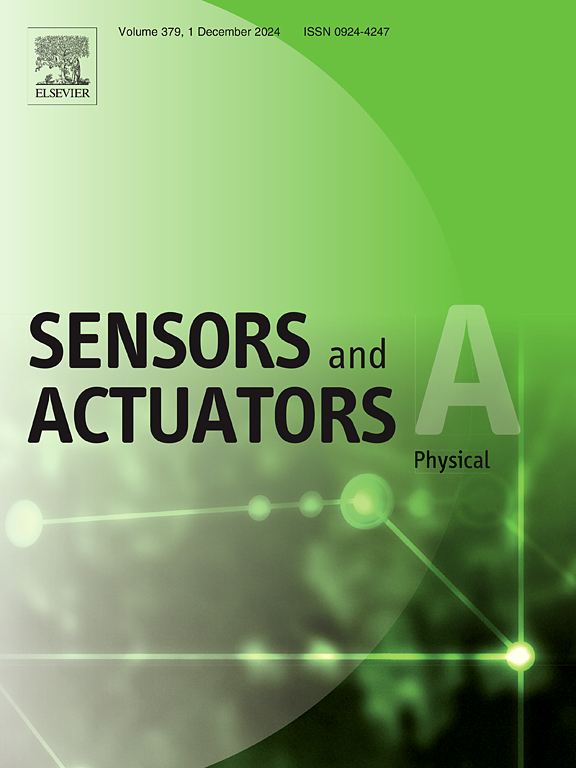Dynamic modeling of thermo-sensitive hydrogel describing its complex energy conversion mechanism with hysteresis nonlinearity
IF 4.1
3区 工程技术
Q2 ENGINEERING, ELECTRICAL & ELECTRONIC
引用次数: 0
Abstract
Thermo-sensitive hydrogel (TSH) demonstrates a lot of promise for soft robots. However, the TSH presents challenges for modeling due to its complex energy conversion mechanism and hysteresis nonlinearity. To address this issue, a dynamic model consisting of an electro-thermal model and a thermo-deformation model is developed in this paper. In which, the electro-thermal model is established for describing the relationship between the driving voltage and the temperature of the TSH. The thermo-deformation model consisting of a Prandtl-Ishlinskii model, a polynomial model and a transfer function model is established between the temperature and the deformation of the TSH. In addition, the thermo-deformation model describes the asymmetric and rate-dependent hysteresis nonlinearity of the TSH. Moreover, due to the analytic inverse of the thermo-deformation model, it is convenient to design a model-based controller to achieve the high-precision deformation control of the TSH. Next, unknown parameters in the above models are determined based on the nonlinear least squares algorithm by using the data from the experiment. Finally, model validations are performed, and the fit values are all greater than 89.40 %. Thus, the established dynamic model can accurately describe the complex energy conversion mechanism with hysteresis nonlinearity of the TSH and has great generalization ability.
热敏水凝胶的动态建模,描述其具有滞后非线性的复杂能量转换机制
热敏水凝胶(TSH)在软机器人领域大有可为。然而,由于其复杂的能量转换机制和滞后非线性,TSH 给建模带来了挑战。为了解决这个问题,本文开发了一个由电热模型和热变形模型组成的动态模型。其中,电热模型用于描述驱动电压与 TSH 温度之间的关系。热变形模型由普朗特-伊什林斯基模型、多项式模型和传递函数模型组成,用于描述 TSH 的温度与变形之间的关系。此外,热变形模型还描述了 TSH 的非对称和随速率变化的滞后非线性。此外,由于热变形模型的解析逆,可以方便地设计基于模型的控制器,实现 TSH 的高精度变形控制。接下来,利用实验数据,基于非线性最小二乘法算法确定上述模型中的未知参数。最后,进行模型验证,拟合值均大于 89.40%。因此,所建立的动态模型能准确描述 TSH 具有滞后非线性的复杂能量转换机制,并具有很强的普适性。
本文章由计算机程序翻译,如有差异,请以英文原文为准。
求助全文
约1分钟内获得全文
求助全文
来源期刊

Sensors and Actuators A-physical
工程技术-工程:电子与电气
CiteScore
8.10
自引率
6.50%
发文量
630
审稿时长
49 days
期刊介绍:
Sensors and Actuators A: Physical brings together multidisciplinary interests in one journal entirely devoted to disseminating information on all aspects of research and development of solid-state devices for transducing physical signals. Sensors and Actuators A: Physical regularly publishes original papers, letters to the Editors and from time to time invited review articles within the following device areas:
• Fundamentals and Physics, such as: classification of effects, physical effects, measurement theory, modelling of sensors, measurement standards, measurement errors, units and constants, time and frequency measurement. Modeling papers should bring new modeling techniques to the field and be supported by experimental results.
• Materials and their Processing, such as: piezoelectric materials, polymers, metal oxides, III-V and II-VI semiconductors, thick and thin films, optical glass fibres, amorphous, polycrystalline and monocrystalline silicon.
• Optoelectronic sensors, such as: photovoltaic diodes, photoconductors, photodiodes, phototransistors, positron-sensitive photodetectors, optoisolators, photodiode arrays, charge-coupled devices, light-emitting diodes, injection lasers and liquid-crystal displays.
• Mechanical sensors, such as: metallic, thin-film and semiconductor strain gauges, diffused silicon pressure sensors, silicon accelerometers, solid-state displacement transducers, piezo junction devices, piezoelectric field-effect transducers (PiFETs), tunnel-diode strain sensors, surface acoustic wave devices, silicon micromechanical switches, solid-state flow meters and electronic flow controllers.
Etc...
 求助内容:
求助内容: 应助结果提醒方式:
应助结果提醒方式:


